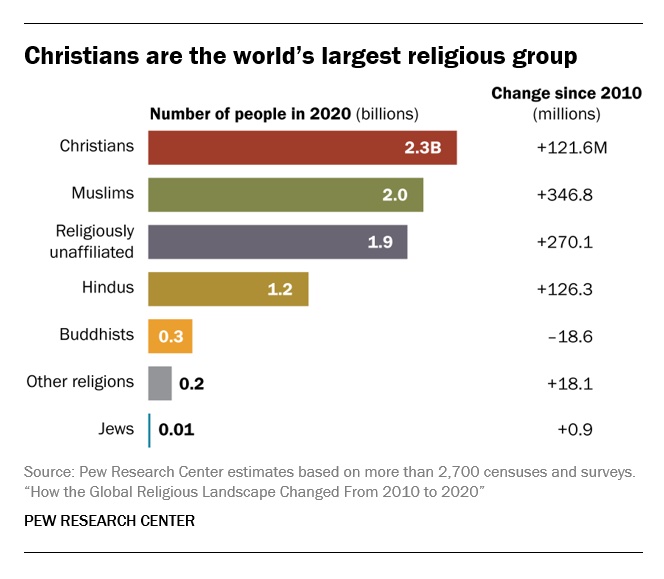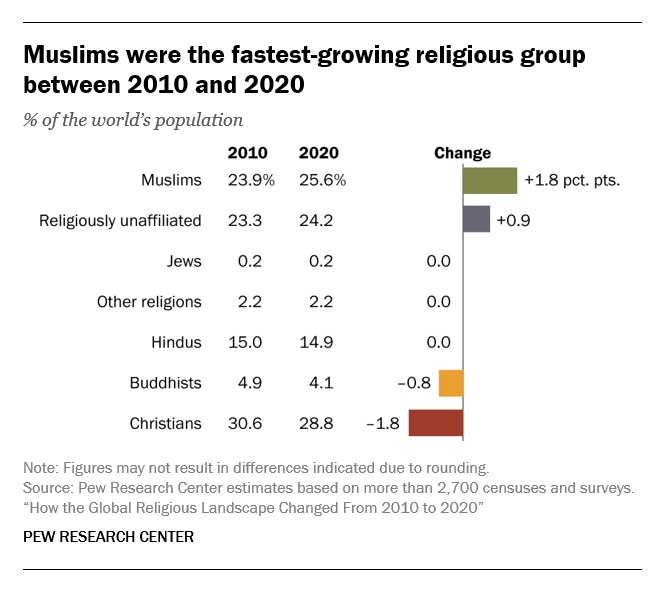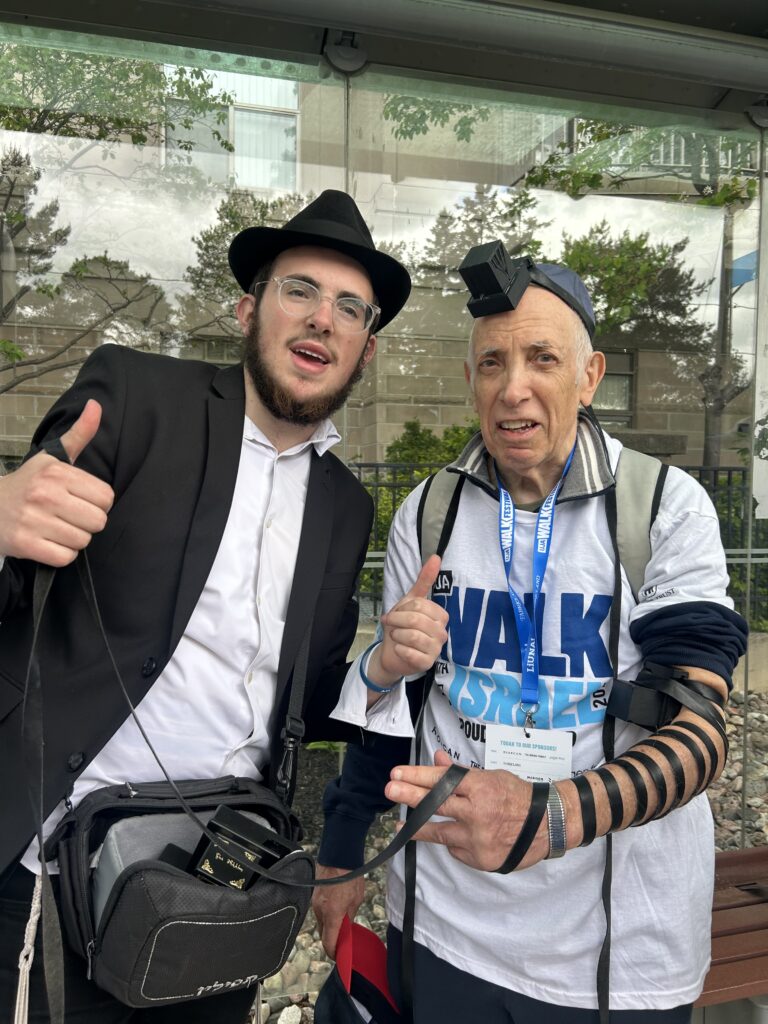Uncategorized
‘My Friend Anne Frank’ tells the incredible story of how Anne’s best friend survived the Holocaust
(JTA) — One spring morning in 1934, two little girls followed their mothers to a corner grocery store in Amsterdam. The mothers, hearing each other speak German to their daughters, discovered they were both Jewish refugees who had recently fled Nazi Germany. The two girls peeked shyly at each other from behind their mothers’ skirts, one of them slight with dark, glossy hair, the other taller and fairer.
Those two girls were Anne Frank and Hannah Pick-Goslar. One was to become the most famous victim of the Holocaust, whose diary documented two years in hiding before the Nazis found her family and she perished at the Bergen-Belsen concentration camp at age 15. The other narrowly survived and made her way to pre-state Israel, eventually enjoying a new life that grew to include three children, 11 grandchildren and 33 great-grandchildren.
The day after their grocery store encounter, the girls recognized each other at the Sixth Montessori School in Amsterdam and became instant best friends. They could not predict that their final encounter would come 11 years later, against all odds, at Bergen-Belsen.
Pick-Goslar spent decades telling her story through interviews and lectures, but her recollections have only just been published for the first time in a memoir, “My Friend Anne Frank,” written with the help of journalist Dina Kraft. She did not live to see its publication on June 6: Pick-Goslar died in October, six months into writing the book and two weeks short of her 94th birthday, leaving Kraft to finish her account.
Kraft spoke with the Jewish Telegraphic Agency about the life of Pick-Goslar, who lived out the future stolen from her dear friend.
The conversation with Kraft, a onetime JTA reporter, has been lightly edited for length and clarity.
JTA: What was it like to tell Pick-Goslar’s story together with her?
Kraft: It was a remarkable experience being able to work with her. We had these very intense interviews where I was asking her to really dig back into her memory. A lot of Holocaust survivors, a lot of survivors of trauma, tend to tell their story — not on autopilot, exactly — but they have a script. It’s perfectly understandable, it’s a tool of self-preservation.
So I was asking her to dive deeper and look more intensely within, and that was not always easy. There were times we would finish the interview after a couple of hours and she would say, “I’m just exhausted, I need to lie down.” And I would say, “Me too,” because it was just exhausting — we were recounting very hard moments.
It got to the point where she would come in the morning and say, “I’m having bad dreams again,” and I would say, “Yeah, me too, I’m having bad dreams also.” Because it was so much of trying to step into her shoes and step into her mindset, and also reading very intensely — it was very much a research project too.
How did Pick-Goslar remember her childhood and friendship with Frank before the war?
She remembers life before the war as incredibly warm and loving. They were wrapped up in a supportive familial environment. Although both she and Anne were refugees from Germany, they came over very young — Anne was 4 and Hannah was 5.
Their parents had a hard time adapting, especially the mothers. Hannah’s mother was born and bred in Berlin, very much a creature of German culture. Her father was a high-ranking official in the Weimar government, so they lived very close to the Reichstag. On top of being horrified that they had just been kicked out of this country they viewed as home, Hannah’s family went back 1,000 years in Germany. So they were heartbroken about their country taking this terrible turn into darkness.
But for Hannah and Anne, it was a very nice life.
What kind of person was Frank, according to her friend?
She was very spunky. She had lots to say and she exhausted the adults around her. She was always challenging them, asking difficult questions, prodding, restless and impatient. The girls loved to play Monopoly, but Anne would get restless and walk off, which is frustrating for a friend! They would push back furniture in the house and do gymnastics together. Later on, when the Germans invaded and they only had other Jewish girlfriends to play with, they formed a club to play ping pong and go for ice cream.
Anne was such a know-it-all that Hannah’s mother had a phrase about her. She said, “God knows all, but Anne Frank knows better!”
But Hannah really saw her as a regular kid — she was just her friend, Anne Frank. She was not an icon of any kind, and she seemed more ordinary than she seemed extraordinary.
In July 1942, Pick-Goslar found her friend’s apartment empty. Like everyone else, she was told that the Franks escaped to Switzerland — not knowing they had actually gone into hiding nearby. What happened to Pick-Goslar while Frank went into hiding?
Hannah was deported a year after Anne went into hiding. In that year, she went back to school. The anti-Jewish laws meant that you couldn’t sit on benches, go to swimming pools, be on a tram, ride your bicycle — and you couldn’t go to school with non-Jewish children.
So Hannah and Anne were both fortunate to be accepted to the Jewish Lyceum, considered one of the more prestigious Jewish schools in Amsterdam under German occupation. But in the fall of 1942, the deportations had already begun. So every day there was a different student and friend missing from class, and different teachers and administrators missing. They never knew whether it was because somebody went into hiding or because they had been deported.
Another thing happened at this time. In October, when Hannah was 14 years old, her mother Ruth was pregnant. She was determined not to go to a hospital because there were rumors of people being deported directly from hospitals, so she gave birth at home with a Jewish doctor and Jewish midwife. The baby ended up being stillborn and Hannah’s mother died the next day.
As more and more Jews were deported, Hannah was protected for a while. Her family secured a pair of South American passports, and they were also on the so-called “Palestine list.” The idea was that eventually they would be part of a prisoner swap between the British and the Germans — German soldiers for “exchange Jews” who would be sent to Palestine, which was under the British mandate.
Pick-Goslar survived to have three children, 11 grandchildren and 33 great-grandchildren. (Eric Sultan/The Lonka Project)
So for a while, Pick-Goslar’s family believed they might be spared. How did she end up at the Bergen-Belsen concentration camp in northern Germany?
By the end, the Germans rounded up all the remaining Jews from Amsterdam, including those who had special stamps in their passports. By June 1943, Hannah’s family was in one of the final roundups of Jews in Amsterdam.
First they went to Westerbork, a transit camp in Holland on the border with Germany. It was basically a holding purgatory, and from there people were deported either to Auschwitz or Sobibor — in which they were almost certainly killed — or if they were luckier, to Theresienstadt or Bergen-Belsen, which were concentration camps but not death camps. Eventually, after several months in Westerbork, Hannah’s family was deported to Bergen-Belsen.
It was bearable in the first few months and they were still fed, though not much. But by February of 1945, the Russians were approaching in the east and the Germans were trying to move people from outer concentration camps into Germany. So Bergen-Belsen swelled to many times its size and became incredibly overcrowded. There was less and less food and water, and typhus started raging through the camp.
How did Pick-Goslar and Frank find each other again at Bergen-Belsen?
Around this time, a tent camp was erected across from Hannah’s part of the camp. People saw other women speaking different languages — Hungarian, Polish, Greek, and eventually Dutch as well. They were emaciated and skeletal.
The Germans forbade going out to talk at the fence and filled it with straw, so that people wouldn’t see each other anymore. But the women found a way to communicate, and word got to Hannah that Anne Frank was on the other side of the fence. Of course, she didn’t believe it, because the Frank family had left the impression that they were in Switzerland. But she decided to go find out for herself, even though it was extremely dangerous — you’d be shot if you went to the fence.
She crept up quietly and said, “Hallo, anybody there?” Then she heard a voice from across the fence, and by chance it was Auguste van Pels, one of the people who was in hiding with Anne’s family. She said almost casually, “Oh, you must be here for Anne,” and she brought Anne from the tent.
What were their last memories together?
Anne was coming from Auschwitz, so she was a broken shadow of her former self. She was freezing, starving and wailing that she was all alone in the world. She assumed that both of her parents were dead at this point. She didn’t know that just a week or two before, her father had been liberated from Auschwitz.
Imagine two girls on opposite sides of this fence — two very loved, coddled girls, who did not know deprivation, but now were completely in the throes of the worst days of the war, completely dehumanized and mistreated. There they were on opposite sides of this fence, best friends, sobbing.
Anne begged Hannah to bring her some food and Hannah said yes immediately, without knowing how she would get it. She said that she would come back in a couple of nights. And there was this amazing moment of female solidarity: The women in her barrack were so moved by the story of this reunion, they wanted to help — so from under a pillow here, hidden in a suitcase there, they gathered the little they had to give and put everything into a sock.
Out went Hannah again, a night or two later, to the fence. When she threw the sock over, she suddenly heard footsteps and then a scream — Anne had just lost the package to a fellow prisoner who took it out of her hands. She was distraught and couldn’t stop crying, but Hannah said, “Just stop crying, I’ll come back again with food.”
So she went back a few days later again with more food collected from her barrack. This time they triangulated better and Anne caught the package. That turned out to be the last time they ever met.
How did Hannah remember the end of the war?
At the very end of the war, the Germans forced everybody who could still walk at Bergen-Belsen onto a couple of different trains. These trains were meant to go to Theresienstadt, where they would be killed.
Hannah was put on a train with her little sister Gabi, whom she was trying to keep alive. It was a harrowing 13-day ride throughout the eastern German countryside. The people were very sick and starving, with no food or water for the journey. There was one especially awful moment when the man next to Hannah tried to spill his bowl of diarrhea outside the door of the train, but instead it splashed all over her.
She was so ill with typhus that she eventually passed out around day 13. When she woke up, people were already off the train. She asked what was going on, and someone said, “Don’t you know? We were liberated by the Russians.”
What did Pick-Goslar make of the tremendous legacy left by Frank’s diary? Did she feel that her friend was correctly understood?
For her, reading the diary was a revelation. She felt like she was sort of reunited with this old friend, which was a very powerful feeling, but also very sad. She saw a girl developing into a young woman whom she would still like to know. She was very grateful that Anne’s diary had been recovered, that so many people got to know her story, and that her diary became a gateway to learning more about the Holocaust.
I think she was a little upset by the sanitized version of Anne Frank. She spoke often about the famous passage in her diary, which is repeated and painted on walls and put on postcards: “In spite of everything, I still believe that people are really good at heart.” Hannah said that if Anne had survived the hell of Auschwitz and Bergen-Belsen, she did not think she would stand by that statement anymore. I think she was concerned about some level of oversimplification.
She was very gratified that Anne’s voice never died and still lives on through her words, but she also wanted people to have a richer and more contextual understanding of the slaughter of millions of people that was the Holocaust.
—
The post ‘My Friend Anne Frank’ tells the incredible story of how Anne’s best friend survived the Holocaust appeared first on Jewish Telegraphic Agency.
Uncategorized
How the Global Religious Landscape Changed from 2010 to 2020

Muslims grew fastest; Christians lagged behind global population increase
• Christians are the world’s largest religious group, at 28.8% of the global population. They are a majority everywhere except the Asia-Pacific and Middle East-North Africa regions. Sub-Saharan Africa has surpassed Europe in having the largest number of Christians. But Christians are shrinking as a share of the global population, as millions of Christians “switch” out of religion to become religiously unaffiliated.

• Muslims are the world’s second-largest religious group (25.6% of the world’s population) and the fastest-growing major religion, largely due to Muslims’ relatively young age structure and high fertility rate. They make up the vast majority of the population in the Middle East-North Africa region. In all other regions, Muslims are a religious minority, including in the Asia-Pacific region (which is home to the greatest number of Muslims).

• The religiously unaffiliated population is the world’s third-largest religious category (24.2% of the global population), after Christians and Muslims. Between 2010 and 2020, religiously unaffiliated people grew more than any group except Muslims, despite their demographic disadvantages of an older age structure and relatively low fertility. The unaffiliated made up a majority of the population in 10 countries and territories in 2020, up from seven a decade earlier.
• Hindus are the fourth-largest religious category (14.9% of the world’s population), after Christians, Muslims and religiously unaffiliated people. Most (99%) live in the Asia-Pacific region; 95% of all Hindus live in India alone. Between 2010 and 2020, Hindus remained a stable share of the world’s population because their fertility resembles the global average, and surveys indicate that switching out of or into Hinduism is rare.
• Buddhists (4.1% of the world’s population) are the only group in this report whose number declined worldwide between 2010 and 2020. This was due both to religious disaffiliation among Buddhists in East Asia and to a relatively low birth rate among Buddhists, who tend to live in countries with older populations. Most of the world’s Buddhists (98%) reside in the Asia-Pacific region, the birthplace of Buddhism.
• Jews, the smallest religious group analyzed separately in this report (0.2% of the world’s population), lagged behind global population growth between 2010 and 2020 – despite having fertility rates on par with the global average – due to their older age structure. Most Jews live either in North America (primarily in the United States) or in the Middle East-North Africa region (almost exclusively in Israel).
These are among the key findings of a Pew Research Center analysis of more than 2,700 censuses and surveys, including census data releases that were delayed due to the coronavirus pandemic. This report is part of the Pew-Templeton Global Religious Futures project, which analyzes global religious change and its impact on societies around the world. Funding for the Global Religious Futures project comes from The Pew Charitable Trusts and the John Templeton Foundation.
Uncategorized
Antisemitism in some unlikely places in America

By HENRY SREBRNIK Antisemitism flourishes in a place where few might expect to confront it – medical schools and among doctors. It affects Jews, I think, more emotionally than Judeophobia in other fields.
Medicine has long been a Jewish profession with a history going back centuries. We all know the jokes about “my son – now also my daughter – the doctor.” Physicians take the Hippocratic Oath to heal the sick, regardless of their ethnicity or religion. When we are ill doctors often become the people who save us from debilitating illness and even death. So this is all the more shocking.
Yes, in earlier periods there were medical schools with quotas and hospitals who refused or limited the number of Jews they allowed to be affiliated with them. It’s why we built Jewish hospitals and practices. And of course, we all shudder at the history of Nazi doctors and euthanasia in Germany and in the concentration camps of Europe. But all this – so we thought – was a thing of a dark past. Yet now it has made a comeback, along with many other horrors we assume might never reappear.
Since the Hamas attack on Israel on October 7, 2023, there has been a resurgence of antisemitism, also noticeable in the world of healthcare. This is not just a Canadian issue. Two articles on the Jewish website Tablet, published Nov. 21, 2023, and May 18, 2025, spoke to this problem in American medicine as well, referencing a study by Ian Kingsbury and Jay P. Greene of Do No Harm, a health care advocacy group, based on data amassed by the organization Stop Antisemitism. They identified a wave of open Jew-hatred by medical professionals, medical schools, and professional associations, often driven by foreign-trained doctors importing the Jew-hatred of their native countries, suggesting “that a field entrusted with healing is becoming a licensed purveyor of hatred.”
Activists from Doctors Against Genocide, American Palestinian Women’s Association, and CODEPINK held a demonstration calling for an immediate cease-fire in Gaza at the Hart Senate Office Building in Washington, D.C., Nov. 16, 2023, almost as soon as the war began. A doctor in Tampa took to social media to post a Palestinian flag with the caption “about time!!!” The medical director of a cancer centre in Dearborn, Michigan, posted on social media: “What a beautiful morning. What a beautiful day.” Even in New York, a physician commented on Instagram that “Zionist settlers” got “a taste of their own medicine.” A Boston-based dentist was filmed ripping down posters of Israeli victims and a professor at the University of Pennsylvania Perelman School of Medicine did the same. Almost three-quarters of American medical associations felt the need to speak out on the war in Ukraine but almost three-quarters had nothing to say about the war in Israel.
Antisemitism in academic medical centres is fostering noxious environments which deprive Jewish healthcare professionals of their civil right to work in spaces free from discrimination and hate, according to a study by the Data & Analytics Department of StandWithUs, an international, non-partisan education organization that supports Israel and fights antisemitism.
“Academia today is increasingly cultivating an environment which is hostile to Jews, as well as members of other religious and ethnic groups,” StandWithUs director of data and analytics, and study co-author, Alexandra Fishman, said on May 5 in a press release. “Academic institutions should be upholding the integrity of scholarship, prioritizing civil discourse, rather than allowing bias or personal agendas to guide academic culture.”
The study, “Antisemitism in American Healthcare: The Role of Workplace Environment,” included survey data showing that 62.8 per cent of Jewish healthcare professionals employed by campus-based medical centres reported experiencing antisemitism, a far higher rate than those working in private practice and community hospitals. Fueling the rise in hate, it added, were repeated failures of DEI (diversity, equity, and inclusion) initiatives to educate workers about antisemitism, increasing, the report said, the likelihood of antisemitic activity.
“When administrators and colleagues understand what antisemitism looks like, it clearly correlates with less antisemitism in the workplace,” co-author and Yeshiva University professor Dr. Charles Auerbach reported. “Recognition is a powerful tool — institutions that foster awareness create safer, more inclusive environments for everyone.”
Last December, the Data & Analytics Department also published a study which found that nearly 40 per cent of Jewish American health-care professionals have encountered antisemitism in the workplace, either as witnesses or victims. The study included a survey of 645 Jewish health workers, a substantial number of whom said they were subject to “social and professional isolation.” The problem left more than one quarter of the survey cohort, 26.4 per cent, “feeling unsafe or threatened.”
The official journal of the Alliance for Academic Internal Medicine concurs. According to “The Moral Imperative of Countering Antisemitism in US Medicine – A Way Forward,” by Hedy S. Wald and Steven Roth, published in the October 2024 issue of the American Journal of Medicine, increased antisemitism in the United States has created a hostile learning and practice environment in medical settings. This includes instances of antisemitic behaviour and the use of antisemitic symbols at medical school commencements.
Examples of its impact upon medicine include medical students’ social media postings claiming that Jews wield disproportionate power, antisemitic slogans at the University of California, Los Angeles (UCLA) David Geffen School of Medicine, antisemitic graffiti at the University of California, San Francisco (UCSF) Cancer Centre, Jewish medical students’ exposure to demonization of Israel diatribes and rationalizing terrorism; and faculty, including a professor of medicine at UCSF, posting antisemitic tropes and derogatory comments about Jewish health care professionals. Jewish medical students’ fears of retribution, should they speak out, have been reported. “Our recent unpublished survey of Jewish physicians and trainees demonstrated a twofold increase from 40% to 88% for those who experienced antisemitism prior to vs after October 7,” they stated.
In some schools, Jewish faculty are speaking out. In February, the Jewish Faculty Resilience Group at UCLA accused the institution in an open letter of “ignoring” antisemitism at the School of Medicine, charging that its indifference to the matter “continues to encourage more antisemitism.” It added that discrimination at the medical school has caused demonstrable harm to Jewish students and faculty. Student clubs, it said, are denied recognition for arbitrary reasons; Jewish faculty whose ethnic backgrounds were previously unknown are purged from the payrolls upon being identified as Jews; and anyone who refuses to participate in anti-Zionist events is “intimidated” and pressured.
Given these findings, many American physicians are worried not only as Jewish doctors and professionals, but for Jewish patients who are more than ever concerned with whom they’re meeting. Can we really conceive of a future where you’re not sure if “the doctor will hate you now?”
Henry Srebrnik is a professor of political science at the University of Prince Edward Island.
Uncategorized
The 2025 Toronto Walk (and talk ) for Israel

By GERRY POSNER There are walks and then there are walks. The Toronto UJA Walk for Israel on May 25, 2025 was one of a kind, at least as far as Canada and Jews are concerned. The number of people present was estimated to be 56,000 people or 112,000 total shoes. (How they get to that number is bewildering to me, since there is no one counting). This was 6,000 more than last year. Whether it is true or not, take it from me, it was packed. The synagogues in Canada should be so fortunate to get those numbers in total on High Holidays. The picture here gives you a sense of the size of the crowd.

This was my first walk in Toronto for Israel and I was with my granddaughter, Samantha Pyzer (not to forget her two friends whom she managed to meet at the site, no small feat, even with iPhones as aids). The official proceedings began at 9:00 a.m. and the walk at 10:00 a.m. There was entertainment to begin with, also along the way, and at the finish as well. The finish line this year was the Prosserman Centre or the JCC as it often called. The walk itself was perhaps 4 kilometres – not very long, but the walking was slow, especially at the beginning. There were lots of strollers, even baby carriages, though I did not see any wheelchairs. All ages participated on this walk. I figured, based on what I could see on the faces of people all around me that, although I was not the oldest one on the walk, I bet I made the top 100 – more likely the top 20.
What was a highlight for me was the number of Winnipeggers I met, both past and present. Connecting with them seemed to be much like a fluke. No doubt, I missed la lot of them, but I saw, in no particular order (I could not recall the order if my life depended on it): Alta Sigesmund, (who was, a long time ago, my daughter Amira’s teacher), Marni Samphir, Karla Berbrayer and her husband Dr. Allan Kraut and family. Then, when Samantha and I made it to the end and sat down to eat, I struck up a conversation with a woman unknown to me and as we chatted, she confirmed her former Winnipeg status as a sister-in- law to David Devere, as in Betty Shwemer, the sister of Cecile Devere. I also chanced upon Terri Cherniack, only because I paused for a moment and she spotted me. As we closed in near the finish, I met ( hey were on their way back), Earl and Suzanne Golden and son Matthew, as well as Daniel Glazerman. That stop caused me to lose my granddaughter and her pals. Try finding them amid the noise and size of the crowd – but I pulled it off.

As I was in line to get food, I started chatting with a guy in the vicinity of my age. I dropped the Winnipeg link and the floodgates opened with “ Did I know Jack and Joanie Rusen?” So that was an interesting few minutes. And I was not too terribly surprised to come across some of my Pickleball family. All of these meetings, along with spotting some of my sister’s family and other cousins, were carried on with the sound of the shofar as we moved along the way. In short, this was a happening. Merchants selling a variety of products, many of them Israeli based, were in evidence and, of course, the day could not have ended without the laying of tefillin, aided by Chabad, who have perfected the procedure to take less than a minute. See the photo. Chabad had a willing audience.
Aside from the joy of sharing this experience with my granddaughter, the very presence of all these Jews gathered together for a common reason made this day very special to me. However, there was a downside to the day. The downside was that, as we began to walk back to our car there was no other way I could figure out how to return when the rains came and came. While we walked faster, we were impeded by pouring rain and puddles. But Samantha wanted to persevere, as did I. We made it, but were drenched. My runners are still drying out as I write this two days later.
What with being surrounded by 56,000 people, the noise, the slow walking, and the rain, I can still say the day was a real highlight for me – one of the better moments since our arrival in Toronto in 2012. As well as the photos we took along the way, I have the reminder of the day, courtesy of the UJA, as evidenced from the photo. It was not just the walk, but the talk that accompanied the walk that made it so worthwhile for me. I would do it again, minus the rain.
